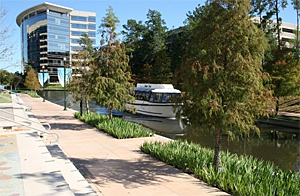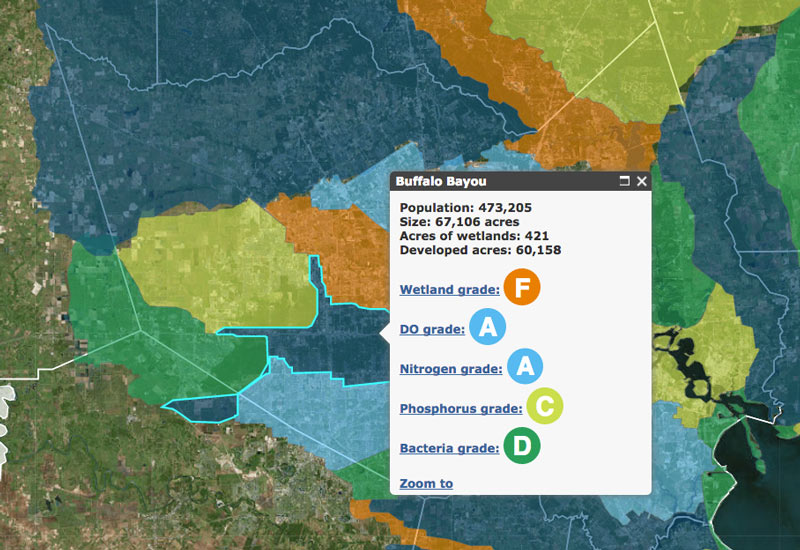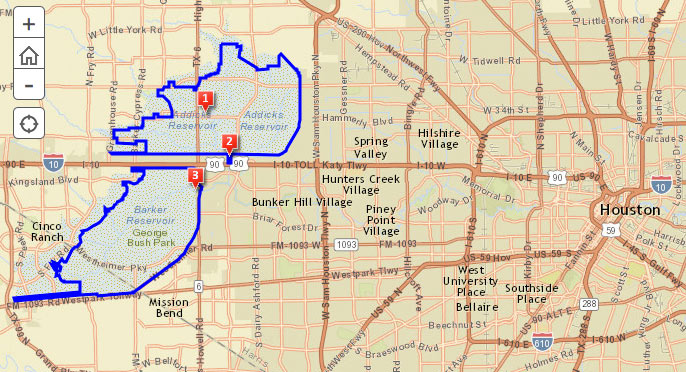THE WOODLANDS SEEKS PERMISSION TO DEPLOY MUTANT FISH TO FIGHT WATERWAY WEEDS  The Woodlands Development Company has filed a request with the state to add some genetically sterile Asiatic grass carp in the development’s Waterway feature, Catherine Dominguez notes in the Houston Chronicle. The fish are a proposed answer to the bushy pondweed and algae blooms that have recently been clogging up the created channel, which runs from the Lake Woodlands reservoir to the Woodlands Mall alongside I-45. Dominguez writes that the permit request was set in motion by a complaint from Ironman Texas, which at the last minute moved the miles-long water course of its recent Woodlands supertriathlon, citing skepticism that water quality was okay for swimmers. The carp is native to the Amur River that divides northeastern China from Russia; TPWD has issued permits for stocking the fish in Texas since 1992, but only in its deliberately-given-too-many-chromosomes-to-reproduce triploid form. The TPWD’s grass carp permit writeup includes advice on fish deployment, reasonable fish performance expectations, and info on how to prevent fish escape. [Houston Chronicle] Photo of Woodlands Waterway: TheWoodlandsTX.com
The Woodlands Development Company has filed a request with the state to add some genetically sterile Asiatic grass carp in the development’s Waterway feature, Catherine Dominguez notes in the Houston Chronicle. The fish are a proposed answer to the bushy pondweed and algae blooms that have recently been clogging up the created channel, which runs from the Lake Woodlands reservoir to the Woodlands Mall alongside I-45. Dominguez writes that the permit request was set in motion by a complaint from Ironman Texas, which at the last minute moved the miles-long water course of its recent Woodlands supertriathlon, citing skepticism that water quality was okay for swimmers. The carp is native to the Amur River that divides northeastern China from Russia; TPWD has issued permits for stocking the fish in Texas since 1992, but only in its deliberately-given-too-many-chromosomes-to-reproduce triploid form. The TPWD’s grass carp permit writeup includes advice on fish deployment, reasonable fish performance expectations, and info on how to prevent fish escape. [Houston Chronicle] Photo of Woodlands Waterway: TheWoodlandsTX.com
Tag: Invasive Species

This month the Galveston Bay Foundation and Houston Advanced Research Center released their second annual report card on the health of Galveston Bay, boiling down a wide range of measurements into a series of letter grades. The report card, which looks at the bay itself along with the bayous that drain into it, aims to be easy to understand for folks with or without scientific training. Each of the 6 main categories of grade — including subjects like wildlife population trends, pollution sources, and human health hazards — is broken down with explanations of what specific measurements that rating is based on (and more details in the full report, for those who want them).
The agencies have also put together a Find Your Watershed tool, which lets you check in on how your own part of town is affecting the bay’s GPA. (That’s Buffalo Bayou watershed’s report shown above; the bayou did exceptionally well in dissolved oxygen and nitrogen content this term, but failed wetlands.) You can look up any address and see how the surrounding runoff area measures up in some of the report’s subject categories. (Note that the search tool’s map doesn’t use the same color-by-grade scheme that the rest of the report employs — you’ll have to click on each watershed to see the actual marks).
So how did the bay do this year?

The Army Corps of Engineers is holding a public meeting amid this evening’s predicted thunderstorms to chat about the recently begun replacement work on the Addicks and Barker dams, which have each won the rare and highly distinguished label ‘extremely high risk’ through a combination of structural issues and close proximity to Houston. For those not planning to flood the Corps with questions and comments in person, there’s a somewhat-outdated online survey, as well as an online map of updates on the project’s progress. Work to replace the outlet structures of the dams began in February, and is expected to take about 4 years.Â
The 2 reservoirs, spread out across 26,000 acres on either side of the Katy Fwy. near Highway 6, starred in the Sierra Club’s 2011 lawsuit over the construction of Segment E of the Grand Parkway through the reservoirs’ catchment area. The club claimed development spurred by the road could send major additional runoff to the reservoirs, increasing the chance of dam failure, which Dave Fehling of Houston Public Media reports “could do an estimated $60 billion dollars in damage to downtown Houston, to industries along the Houston Ship Channel, [and] even to the Texas Medical Center.” The judge didn’t stop construction of Segment E, but did order new studies on its potential flooding impacts.

